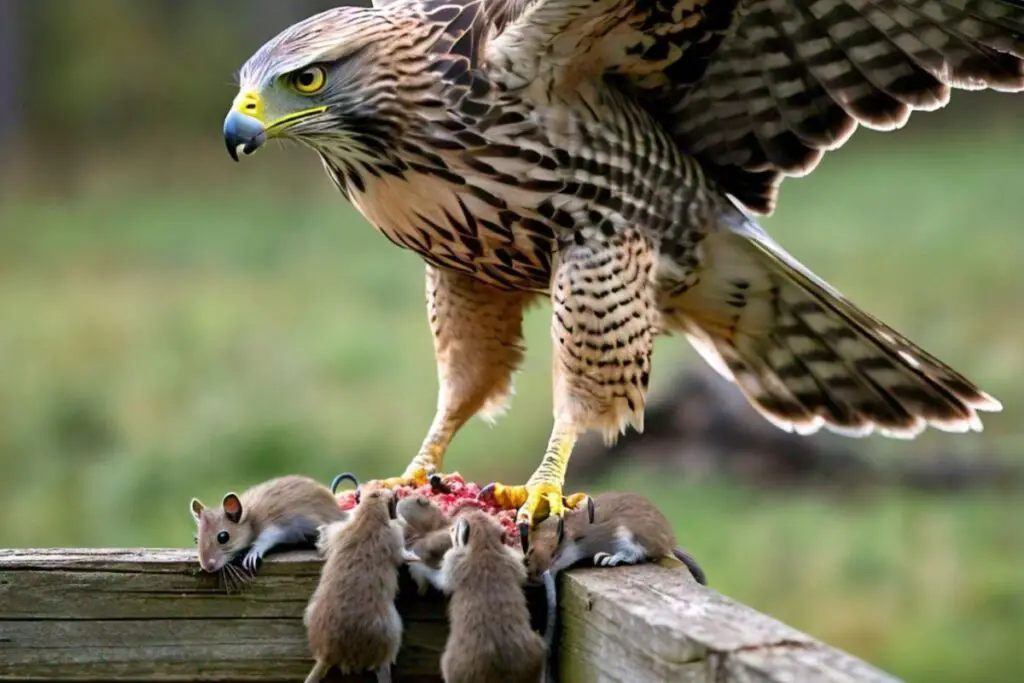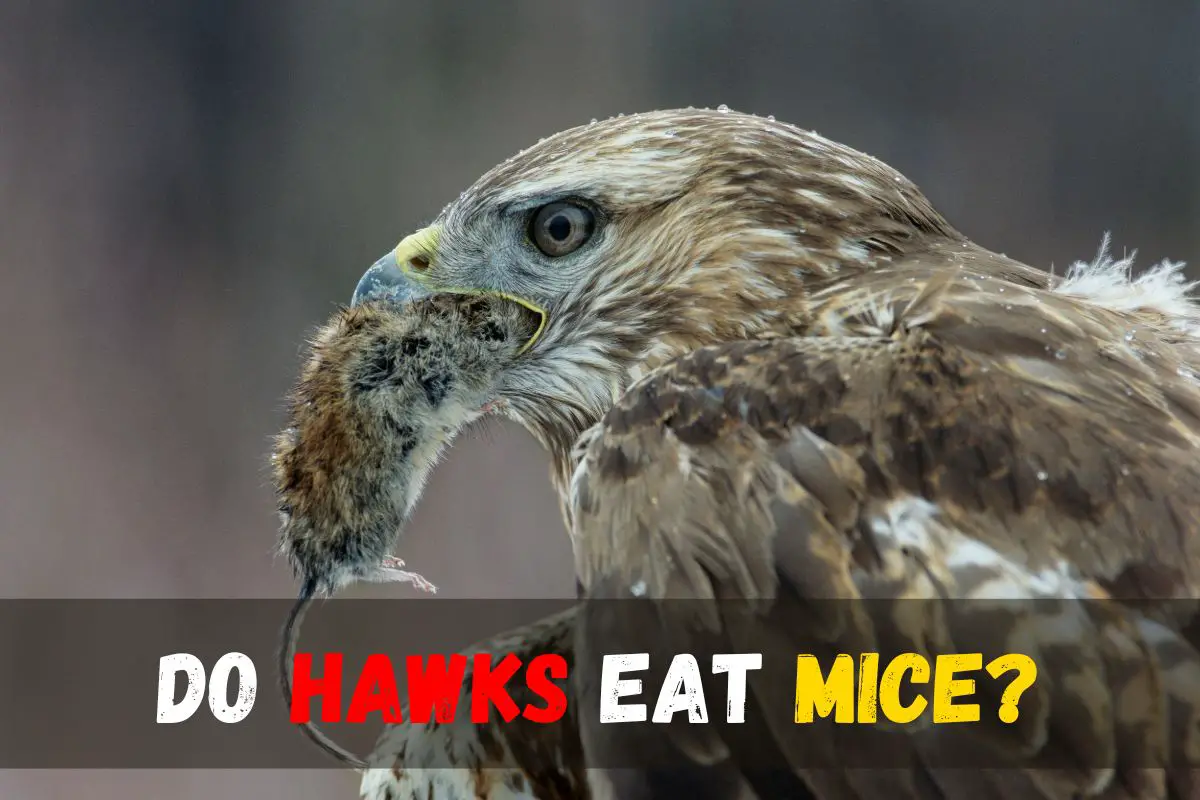In a rural setting where mice are abundant and hawks reside nearby, a farmer finds himself grappling with the challenge of hawk predation on his mouse population. This interaction between hawks and mice can be both beneficial and concerning. While hawks naturally help control the rodent population, their consistent hunting of mice could disrupt the farmer’s equilibrium. As an expert in wildlife management and conservation, addressing this issue requires a nuanced approach. It’s essential to strike a balance that acknowledges the ecological role of hawks while also implementing strategies to minimize any negative impact on the farmer’s circumstances. By understanding the behaviors of both hawks and mice within this agricultural context, tailored solutions can be devised to mitigate conflicts and promote harmonious coexistence between wildlife and human activities.
Do hawks eat mice?
Yes, hawks do indeed eat mice. Mice are a common and nutritious part of a hawk’s diet due to their availability and ease of hunting. Hawks, known for their predatory nature, target small animals like mice, using their sharp talons and keen eyesight to capture them efficiently. Mice provide an important source of food for hawks, especially species like the red-tailed hawk and Cooper’s hawk, which are skilled hunters capable of catching rodents with precision.
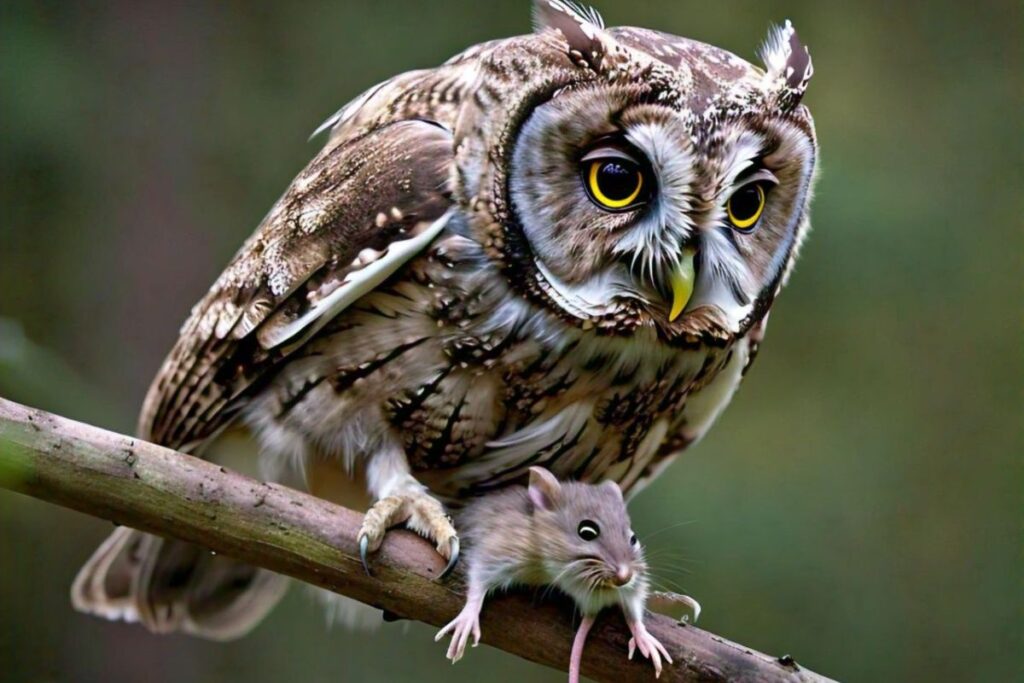
The diet of specific hawk species varies based on available resources; for instance, the Cooper’s hawk demonstrates a penchant for small birds, while the red-tailed hawk primarily focuses on rodents. However, the presence of mice in their habitat significantly increases the likelihood of hawks incorporating them into their menu.
Do Hawks Eat Fish?
What Type Of Hawks Eat Mice?
When it comes to hawks that commonly hunt mice as part of their diet, several species stand out:
Red-tailed Hawks (Buteo jamaicensis)
Red-tailed hawks are among the most widespread and adaptable raptors in North America, found across a variety of habitats from deserts to forests. They are known for their striking reddish-brown tails, which are particularly visible in flight. Red-tailed hawks have excellent eyesight, allowing them to spot prey from high perches or while soaring overhead. While their diet is diverse and includes mammals, birds, and reptiles, they commonly hunt rodents like mice. These hawks will perch on trees or poles, patiently scanning the ground for movement before swooping down swiftly to catch their prey with their sharp talons.
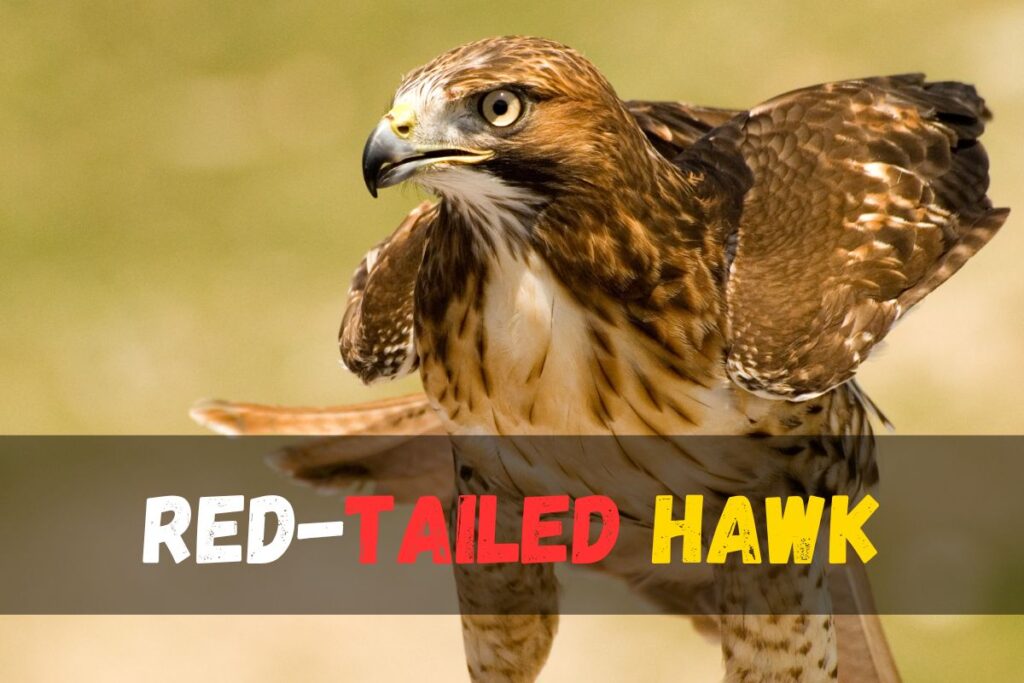
Sharp-shinned Hawks (Accipiter striatus)
Sharp-shinned hawks are small, agile raptors that inhabit wooded areas throughout North America. They are specialized hunters of small birds but also target other small vertebrates, including mice. These hawks have short, rounded wings and long tails, which enable them to maneuver quickly through dense vegetation in pursuit of prey. Sharp-shinned hawks are ambush hunters, often surprising their targets with sudden bursts of speed and agility. While birds make up a significant portion of their diet, they will opportunistically hunt mice and other small mammals when the chance arises.

Do Hawks Eat Ducks?
Cooper’s Hawks (Accipiter cooperii)
Cooper’s hawks are medium-sized accipiters that are adept at navigating through forests and suburban areas. They have rounded wings and long tails, which assist in their quick, agile flight patterns. Cooper’s hawks primarily prey on birds, capturing them with swift, surprise attacks. However, they are opportunistic hunters and will also consume small mammals like mice, particularly in more urban environments where suitable bird prey may be limited. These hawks are known for their ability to adapt to human landscapes, making them a common sight in parks and residential areas.
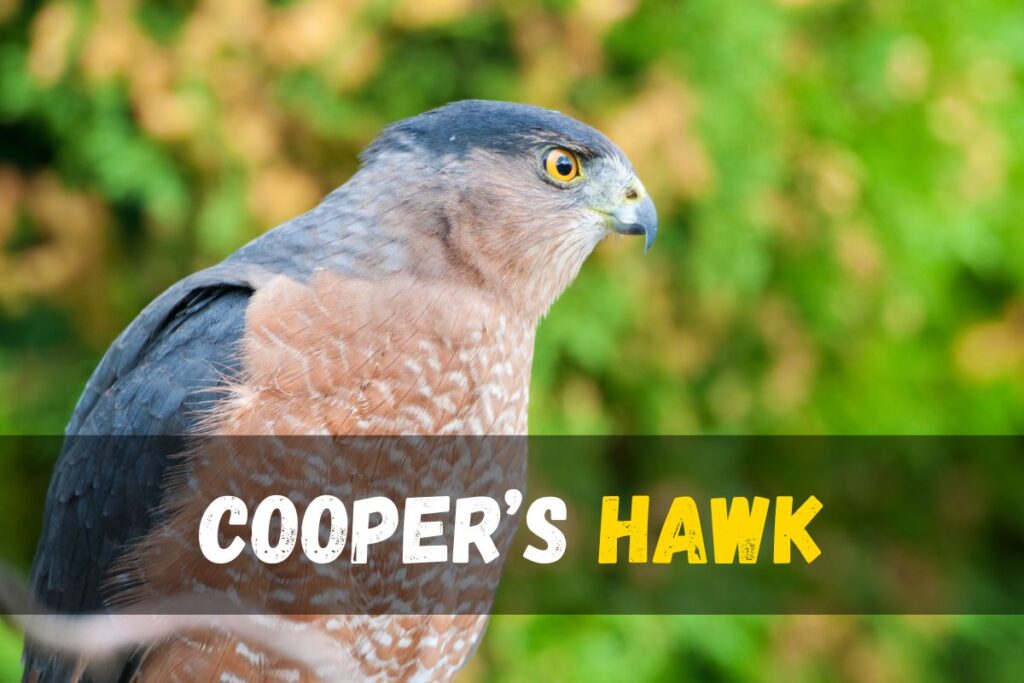
Rough-legged Hawks (Buteo lagopus)
Rough-legged hawks are uniquely adapted to living and hunting in open, northern habitats such as tundra and grasslands. They are named for their feathered legs, which provide insulation against cold climates. Rough-legged hawks have broad wings and a distinctive hovering hunting style, often scanning the ground below for small mammals like voles and lemmings. While they primarily rely on rodents as a food source, including mice, they are also known to consume birds and carrion when available. Rough-legged hawks are more prevalent during winter in their breeding grounds, where they play a vital role in controlling rodent populations.

Broad-winged Hawks (Buteo platypterus)
Broad-winged hawks are forest-dwelling raptors found in eastern North America, favoring dense woodlands. They have broad wings and a short, squared-off tail, which allows for agile flight through thick vegetation. Broad-winged hawks are primarily bird hunters, preying on small songbirds and other avian species. However, they supplement their diet with small mammals like mice, particularly during the nesting season when they require additional food sources to support their young. These hawks are often observed perching in trees, silently watching for movement on the forest floor before descending swiftly to capture prey with their paws.

Do Hawks Swallow Mice Whole?
Hawks, while capable of swallowing small animals whole, typically avoid doing so with mice. This is because mice can struggle and potentially cause harm to the hawk during the swallowing process. Hawks possess relatively small stomachs, making digestion challenging with larger prey like mice, often leading to indigestion or other issues. Instead, hawks prefer to kill their prey by biting off the head and consuming the remainder in smaller portions. Consequently, while a hawk can ingest a mouse whole, it’s not a common behavior observed in these birds.
Do Hawks Eat Deer?
This behavior showcases how hawks adapt their feeding habits to manage the risks associated with their prey’s size, ensuring efficient digestion and minimizing potential harm during consumption.
How can you tell if a hawk has eaten a mouse?
Identifying whether a hawk has eaten a mouse can involve several clues based on the behavior of the hawk and evidence left behind:
- Observation of Feeding Behavior: If you witness a hawk hunting and consuming prey, such as a mouse, it’s a clear indication that the hawk has eaten a mouse. Hawks typically hunt by swooping down on their prey and may consume it on the ground or while perched.
- Feathers and Fur: Hawks often pluck feathers and fur from their prey before consuming it. If you find scattered feathers or fur in the vicinity where a hawk has been observed, it could suggest that the hawk has recently eaten a mouse.
- Remains of Leftovers: After feeding, hawks may leave behind identifiable remains of their prey. Look for small bones, skulls, or other parts of a mouse near areas frequented by hawks. These remnants can provide clear evidence of a mouse being consumed by a hawk.
- Regurgitated Pellets: Hawks, like other birds of prey, regurgitate indigestible parts of their prey in the form of pellets. These pellets contain bones, fur, and other undigested components. Finding such pellets near a hawk’s roosting or feeding area can indicate recent mouse consumption.
- Visual Cues on Hawk: Sometimes, observing the hawk itself can reveal signs of recent feeding. A distended crop (the part of a bird’s throat where food is temporarily stored) or food bulging in the hawk’s throat can suggest recent consumption of a mouse or other prey.
- Behavioral Cues: Hawks may exhibit behaviors such as grooming or resting after a meal. If you notice a hawk behaving in a calm or relaxed manner, it could indicate that it has recently eaten.
When do hawks go hunting?
Hawks, being diurnal birds of prey, are active during the day. They primarily hunt during daylight hours, especially in the early morning and late afternoon. These times offer optimal lighting conditions for hawks to spot their prey from a distance.
The specific timing of when hawks go hunting can vary depending on factors such as the species of hawk and the availability of prey. Generally, hawks are most active shortly after sunrise and before sunset. During these times, they take advantage of cooler temperatures and less wind, which makes hunting more efficient.
Do Hawks Eat Bats?
Do all hawks eat mice?
Not all hawks eat mice as their primary food source. The diet of a hawk can vary depending on its species, habitat, and hunting preferences. While some hawk species, such as the red-tailed hawk and Cooper’s hawk, commonly include mice in their diet, others may prefer different types of prey.
What Method Do Hawks Use to Hunt For Mice?
Hawks are formidable birds of prey. They employ various hunting strategies to capture mice, one of their common prey items. Let’s delve into the methods these birds use in their pursuit of mice.
Observation and Stalking
Hawks are highly observant hunters. They often perch on vantage points like tree branches or utility poles, scanning the ground below for signs of movement. When they spot a potential target, such as a mouse scurrying through the grass or undergrowth, they focus intently and prepare to strike.
Ambush
One effective method employed by hawks is ambush hunting. They may wait patiently in a concealed location, such as within dense foliage or behind a natural barrier, for a mouse to come into their line of sight. With lightning-fast reflexes, the hawk swiftly launches from its hiding spot to seize the unsuspecting prey.
Low-level Flight and Dive
Some hawk species, like the Northern Harrier, have adapted to hunting low to the ground. These hawks fly low over fields or grasslands, using their keen eyesight to detect mice moving amidst the vegetation. Upon spotting a mouse, the hawk will descend rapidly in a controlled dive, known as a stoop, to snatch its prey with precision.
Use of Tail Feathers
Certain hawks, particularly those with long tails like the Cooper’s Hawk, employ their tail feathers during hunting. As they close in on a mouse, they use their tail to maneuver swiftly through obstacles like branches or dense foliage, ensuring they stay on course toward their target.
Cooperative Hunting
In some cases, hawks exhibit cooperative hunting behaviors. For instance, Harris’s Hawks are known to hunt in groups, coordinating their efforts to flush out mice from cover or corner them, increasing their chances of success.
What Other Animals Prey on Mice
Mice serve as a critical part of the food chain, making them prey for a variety of predators across different ecosystems. Here are several animals known for preying on mice:
Owls
Owls are nocturnal birds of prey with exceptional hearing and vision, allowing them to hunt mice efficiently in the dark. Species like the Barn Owl are particularly adept at capturing mice both on the ground and in flight.
Snakes
Many snake species, including rat snakes and kingsnakes, feed on mice. Snakes use their stealth and ambush tactics to catch mice, often striking quickly with venom or constricting their prey.
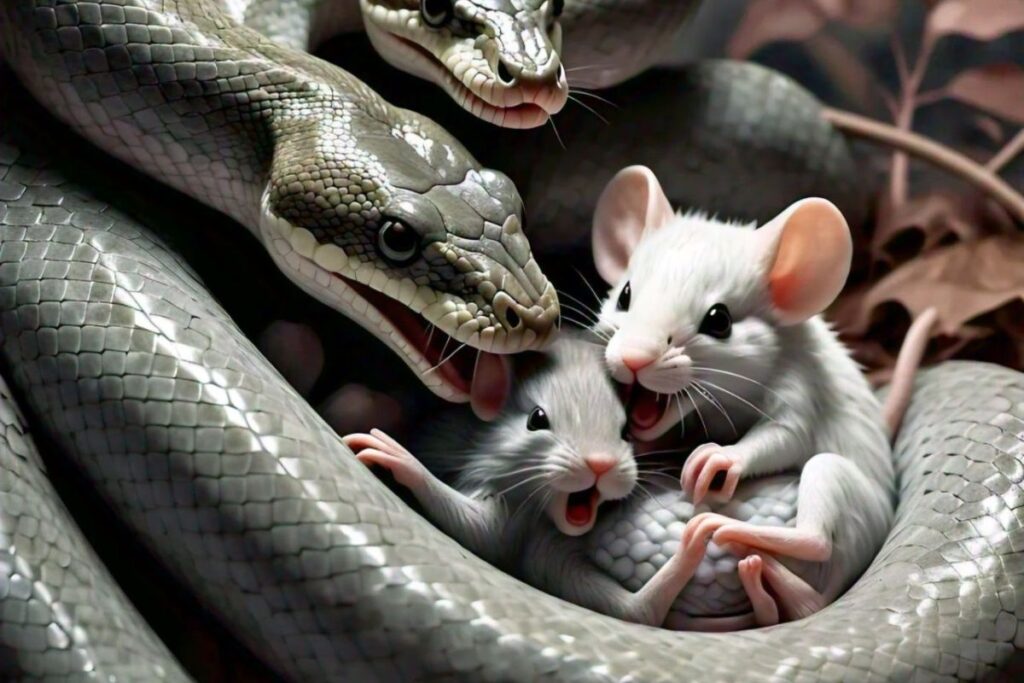
Foxes
Foxes are opportunistic predators that hunt mice and a wide range of other small mammals. Their keen sense of smell and agility make them effective hunters, especially in grassy or wooded areas where mice abound.
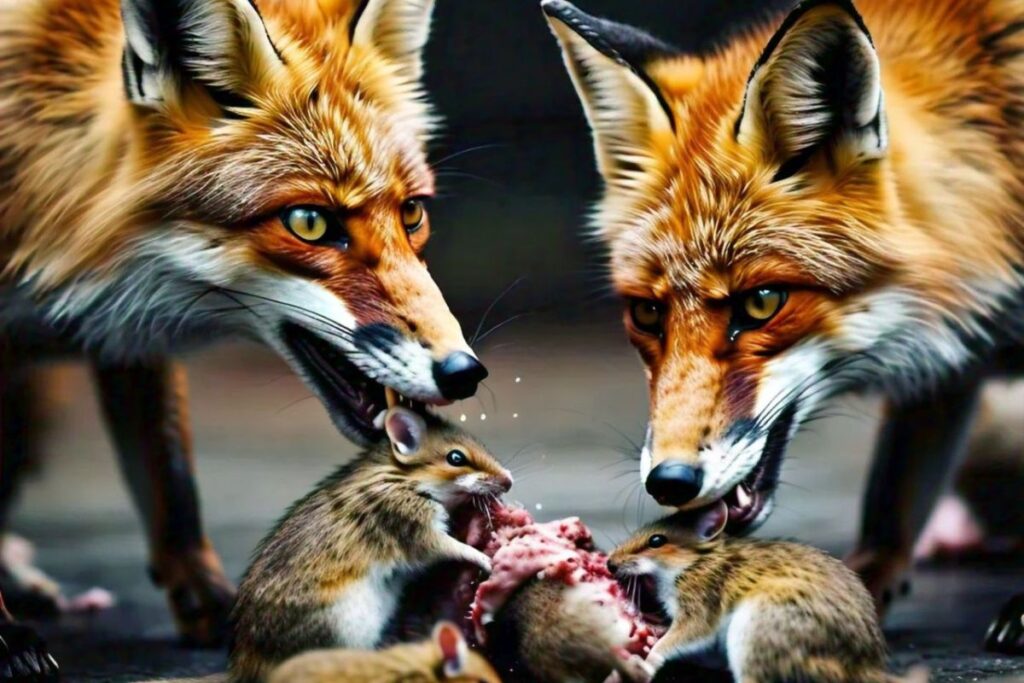
Cats
Domestic and wild cats are natural mouse hunters. Cats are agile and patient predators, stalking mice stealthily before pouncing on them. Their hunting instincts are highly refined, making them formidable mouse catchers.

Weasels and Stoats
Weasels and stoats are small, quick predators that specialize in hunting small rodents like mice. They use their slender bodies and speed to pursue mice into burrows or dense vegetation, where they capture their prey.
Hawks and Falcons
Besides the techniques mentioned earlier, hawks and falcons are skilled aerial hunters who target mice on the ground or in open spaces. Their swift dives and sharp talons effectively catch mice in flight or during low-level pursuit.
Badgers
Badgers are omnivorous mammals that include mice in their diet. While badgers primarily hunt larger prey like rabbits, they opportunistically consume mice when available, using their strong digging abilities to unearth them from caves.
Raccoons
Raccoons are adaptable scavengers and predators known to consume mice as part of their varied diet. Their dexterous paws and sharp teeth enable them to catch and consume mice found in urban or natural habitats.
Dogs
Some dog breeds, particularly terriers, have an instinct for hunting small mammals like mice. Dogs can be effective mouse hunters, especially when trained or encouraged to pursue rodents in certain environments.
FAQ’S
How many mice can a hawk eat on average?
The number of mice a hawk consumes on average can vary based on factors such as the hawk’s size, species, hunting success, and nutritional needs. Hawks are opportunistic hunters and typically consume prey based on their energy requirements.
On average, a medium-sized hawk, like a Red-tailed Hawk or Cooper’s Hawk, may consume around one to three mice per day, depending on the availability of prey and the hawk’s metabolic rate. Larger hawks, such as the Ferruginous hawks or the Red-shouldered hawks, might consume slightly more mice or other small rodents to meet their energy needs.
During periods of high activity, such as breeding or raising young, hawks may consume more mice to support their increased energy demands. Conversely, when prey is scarce, hawks are capable of adjusting their hunting patterns or seeking alternative food sources to survive.
Can mice feed on dead mice?
Yes, mice can feed on dead mice or carcasses if they encounter them, and food resources are limited. However, scavenging behavior is only one of their primary sources of nutrition. In their natural diet, mice mainly consume seeds, grains, fruits, and insects.
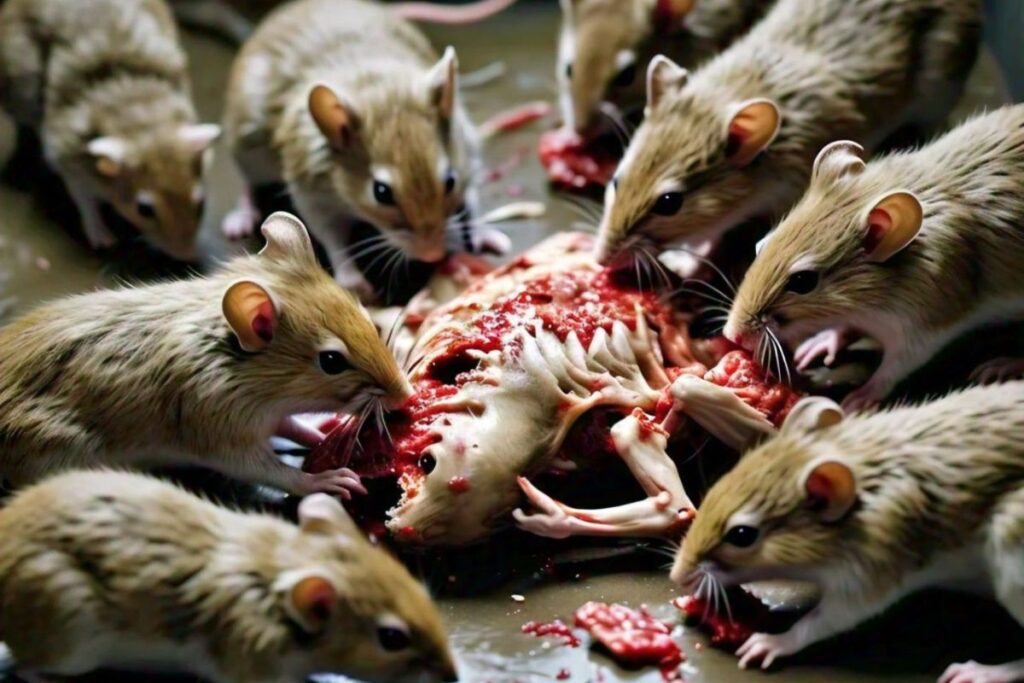
Can a hawk eat a mouse?
Yes, a hawk can indeed eat a mouse. Hawks are predatory birds known for their keen eyesight and hunting abilities. They primarily feed on small mammals, birds, and sometimes reptiles. Mice, being small rodents, are often targeted by various species of hawks as part of their natural diet. Hawks typically hunt by swooping down from a perch or soaring in the sky to catch their prey with their sharp talons. Once captured, a mouse would be consumed by the hawk either while perched or carried away to a safe location. This hunting behavior is crucial for hawks to obtain the nutrients they need to survive and thrive in their habitats. The relationship between hawks and mice exemplifies the predator-prey dynamics that play a vital role in maintaining ecological balance in diverse ecosystems.
